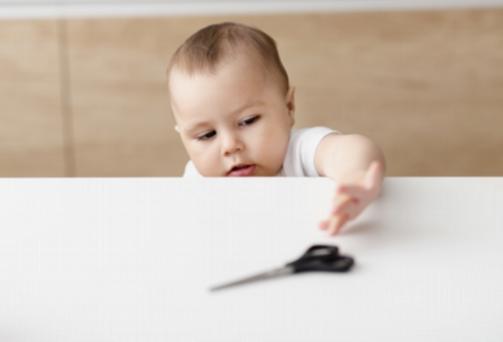As new parents, ensuring the safety of our little ones is a top priority. And when it comes to the potential risks that open windows can pose to our curious toddlers, the importance of taking preventative measures cannot be overstated. In this article, we will explore the role of window guards in child safety, the various types of window guards available, installation tips for maximum protection, legal requirements and standards for window safety devices, and maintenance and safety checks for long-term efficacy. Understanding these key factors will empower you to create a safe and secure environment for your toddler at home.

Understanding the Risks of Open Windows to Toddlers
As a new parent, it's crucial to be aware of the potential dangers that open windows can pose to your curious and adventurous toddler. While enjoying fresh air and ventilation is important for a healthy home environment, open windows can present a serious risk of falls for young children. Toddlers are naturally drawn to windows, and their lack of awareness of potential danger makes them particularly vulnerable to accidents. In fact, according to the National Safety Council, falls from windows are one of the leading causes of injury for children under the age of 5. It's important for parents to understand the potential risks of open windows and take proactive measures to ensure their child's safety.
The Role of Window Guards in Child Safety
Window guards play a crucial role in ensuring child safety, particularly for toddlers who are at risk of falling out of open windows. These safety devices are designed to prevent children from accessing and falling out of windows, providing a reliable barrier to keep them safe inside the home. By serving as a physical barrier between the child and the open window, window guards can significantly reduce the risk of accidental falls and potential injuries. Additionally, window guards provide parents with peace of mind, knowing that their toddlers are protected from the dangers of open windows.
Choosing the Right Type of Window Guards for Your Home
When it comes to choosing the right type of window guards for your home, there are a few important factors to consider. First and foremost, you'll want to make sure that the window guards you select are specifically designed to prevent young children from falling out of windows. Look for guards that have small enough gaps to prevent a child from slipping through, and sturdy enough construction to withstand the force of a child leaning or pushing against them.
Additionally, consider the aesthetic of the window guards and how they will fit with the overall design of your home. While safety is the primary concern, it's also important to choose guards that you feel comfortable having on your windows for the long term. There are a variety of styles and materials available, so take the time to find guards that not only provide the necessary safety features, but also complement the look of your home.
Finally, consider the ease of use and maintenance of the window guards. You'll want guards that are easy to open for adults in case of an emergency, but secure enough to prevent young children from tampering with them. Additionally, choose guards that are easy to clean and maintain, as you'll want to ensure their efficacy for as long as they are installed on your windows. By taking these factors into consideration, you can choose the right type of window guards to provide maximum protection for your toddler at home.
Installation Tips for Maximum Protection with Window Guards
When it comes to installing window guards for maximum protection, there are several important considerations to keep in mind. First and foremost, it's crucial to ensure that the window guards are securely attached to the window frame to prevent any potential for them to become loose or dislodged. Additionally, it's important to choose window guards that are specifically designed for the type and size of windows in your home. Proper measurements and installation are key to ensuring that the guards provide effective protection for your toddler. Finally, it's important to follow the manufacturer's installation instructions carefully to ensure that the guards are installed correctly and will provide the maximum level of protection for your child.
Legal Requirements and Standards for Window Safety Devices
When it comes to the safety of young children in the home, there are legal requirements and standards that must be met in order to provide adequate protection. In many places, there are building codes and regulations that dictate the installation of window safety devices, including window guards, in homes where young children reside. These regulations are in place to ensure that parents and caregivers take the necessary steps to prevent falls from windows, which can be a significant danger to toddlers and young children.
It's important for parents to familiarize themselves with the specific requirements and standards for window safety devices in their area. This may include certain specifications for the type of window guards that must be used, as well as guidelines for proper installation. By understanding and adhering to these legal requirements and standards, parents can ensure that their home provides the highest level of protection for their toddler. Additionally, staying up to date with any changes or updates to these regulations is crucial in maintaining a safe environment for young children.
Maintenance and Safety Checks for Long-Term Window Guard Efficacy
Maintenance and safety checks for long-term window guard efficacy are essential for ensuring the ongoing protection of your toddler at home. It is important to regularly inspect the window guards to ensure that they are securely attached and free from any damage or wear. Additionally, be sure to keep the window guards clean and free from any debris that could affect their effectiveness. Regular maintenance and safety checks will help to ensure that the window guards continue to provide the maximum protection for your toddler and give you peace of mind as a parent.
